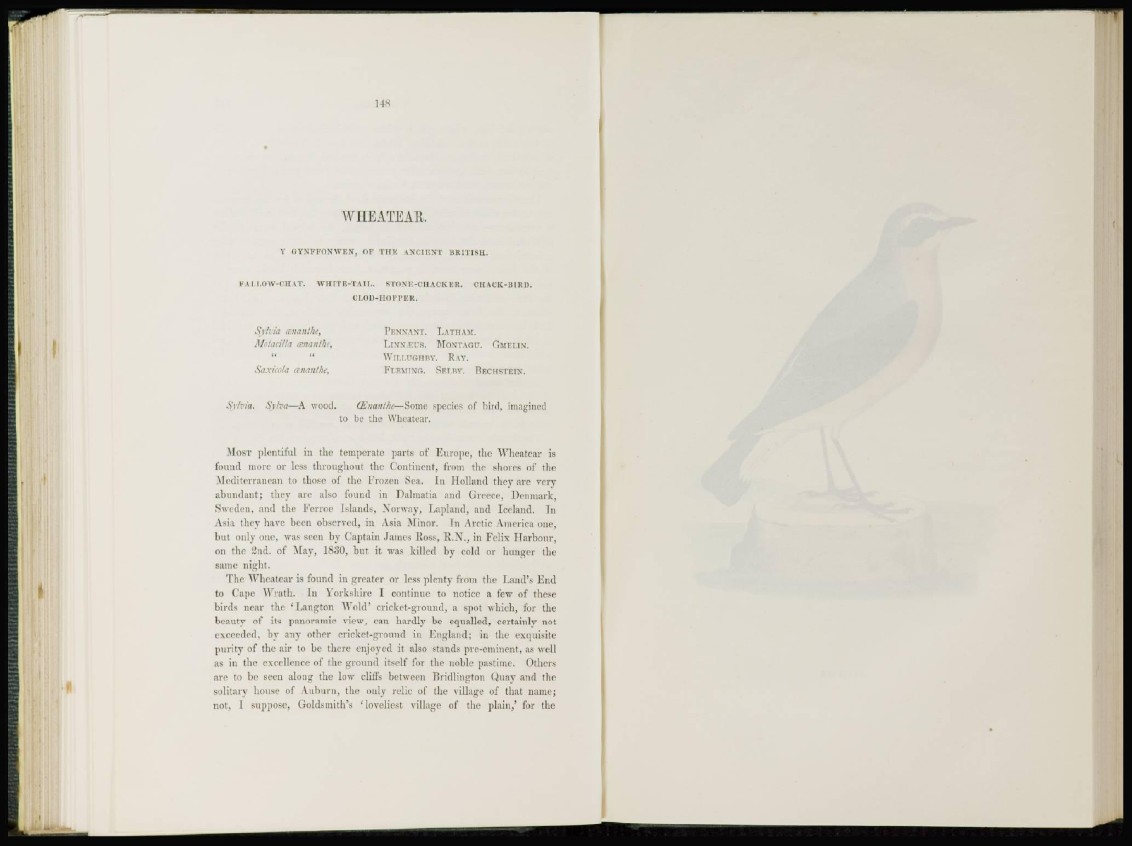
WHEATEAR.
Y 8TNFF0NWEN, OF THE ANCIENT BRITISH.
PALI OW-CH VT. WHITE-TAIL. STONE-CI I ACKER. CIIACK-HIRD.
CLOD-HOPPER.
Sylvia amanfhe, PENNANT. LATHAM.
MotariHa <gnatUfu, LINN.EUS. MONTAGU. GirELXN.
" " WILIATGHTVY. RAY.
Saxii'>/<r <cnan!h(, FLEMING. SRI.MY. BECIISTEIN.
Sylvia. Sylva—A wood. (EuaiUht-—Sonic species of bird, imagined
to be the Wheatear.
MOST plentiful in the temperate parts of Europe, the Wheatear is
found more or less throughout the Continent, from the shores of the
Mediterranean to those of the Frozen Sea. In Holland they are very
abundant; they arc also found in Dalmatia and Greece, Denmark,
Sweden, and the Ferroe Islands, Norway, Lapland, and Iceland. In
Asia they have been observed, in Asia Minor. Tn Arctic America one,
but only one, was seen by Captain James Ross, R.N., in Felix Harbour,
on the Snd, of May, 1830, but it was killed by cold or hunger the
same night.
The Wheatear is found in greater or less plenty from the Land's End
to Cape Wrath. In Yorkshire I continue to notice a few of these
birds near the 'Langton Wold' cricket-ground, a spot which, for the
beauty of its panoramic view, can hardly be equalled, certainlv not
exceeded, by any other cricket-ground in England; in the exquisite
purity of the air to be there enjoyed it also stands pre-eminent, as well
as in the excellence of the ground itself for the noble pastime. Others
are to be seen along the low cliffs between Bridlington Quay and the
solitary house of Auburn, the only relic of the village of that name;
not, I suppose, Goldsmith's 'loveliest village of the plain/ for the